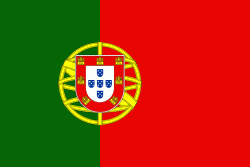Ourém Municipality (Ourém)
 |
 |
The municipality is bordered by the municipalities of Pombal (to the north), Alvaiázere (to the northeast), Ferreira do Zêzere and Tomar (to the east), Torres Novas (to the southeast), Alcanena (to the southwest), and Batalha and Leiria (to the west). The main historical attraction of the municipality is the mighty Castle of Ourém. Nevertheless, millions of faithful Catholics come to the parish of Fátima every year to visit Cova da Iria, the site where three child shepherds are said to have had visions of Our Lady of Fátima in 1917. The Sanctuary of Our Lady of Fátima has become one of the largest religious tourism sites in the world.
The present Mayor is Luís Miguel Albuquerque, elected by the Social Democratic Party.
The municipal holiday is June 20.
A fortification existed in the region of Ourém since at least the period of Muslim domination. The area was reconquered by Christians in 1136, and the town was donated in 1178 by the first king of Portugal, Afonso Henriques, to his third daughter, Princess Theresa. The princess granted it a letter of feudal rights (foral) in 1180, to promote the settlement and development of the village.
Under the Muslims, the village was apparently called Abdegas, but during the times of the Reconquista (12th century) it was called Portus de Auren, from which the name Ourém was later derived. According to popular myth, the name of the village is actually derived from a Moorish Princess who converted to Christianity under the name of Oureana.
The town's historical nucleus developed around the Castle of Ourém, which during the Reconquista served as watchpost for the Castle of Leiria, an important stronghold located nearby. In the mid-14th century, King Peter I turned Ourém and its lands into a County. The third Count of Ourém was the celebrated Nuno Álvares Pereira, the knight who led the Portuguese army to victory against the Castilians in the Battle of Aljubarrota in 1385.
Under Count Afonso (1402–1460), fourth Count of Ourém, the town flourished. To accommodate his court, Count Afonso remodelled the old-fashioned castle and built a palace inside it following the trends in 15th-century Italian military architecture. The ruins of the palace and castle are the main historical and touristic attraction of the town nowadays. Count Afonso is buried in the crypt of the main church of Ourém in a magnificent Gothic tomb created by one of Portugal's main sculptors of the time, Diogo Pires-o-Velho.
After reaching its peak in the 15th century, the town entered a period of relative decline. The town and castle were greatly damaged by the 1755 Lisbon earthquake and the Napoleonic Invasions.
Until its elevation to the status of a city on August 16, 1991, Ourém was known as Vila Nova de Ourém.
Map - Ourém Municipality (Ourém)
Map
Country - Portugal
 |
 |
| Flag of Portugal | |
One of the oldest countries in Europe, its territory has been continuously settled, invaded and fought over since prehistoric times. The territory was first inhabited by pre-Roman and Celtic peoples who had contact with Phoenicians, ancient Greeks and Carthaginians. It was later ruled by the Romans, followed by the invasions of Germanic peoples and the Islamic invasion by the Moors, whose rule was eventually expelled during the Reconquista. Founded first as a county of the Kingdom of León in 868, gained its independence as the Kingdom of Portugal with the Treaty of Zamora in 1143.
Currency / Language
| ISO | Currency | Symbol | Significant figures |
|---|---|---|---|
| EUR | Euro | € | 2 |
| ISO | Language |
|---|---|
| PT | Portuguese language |















